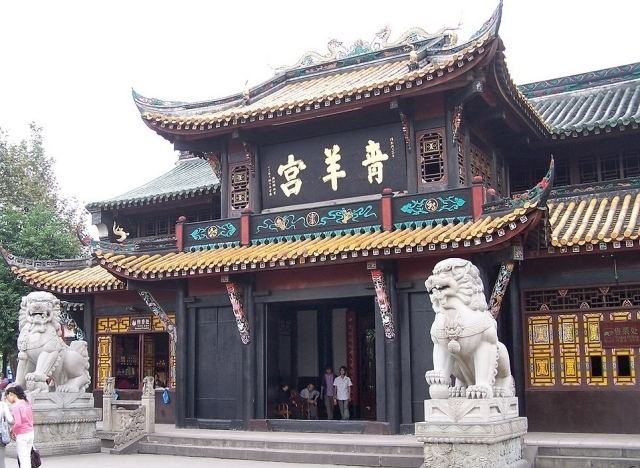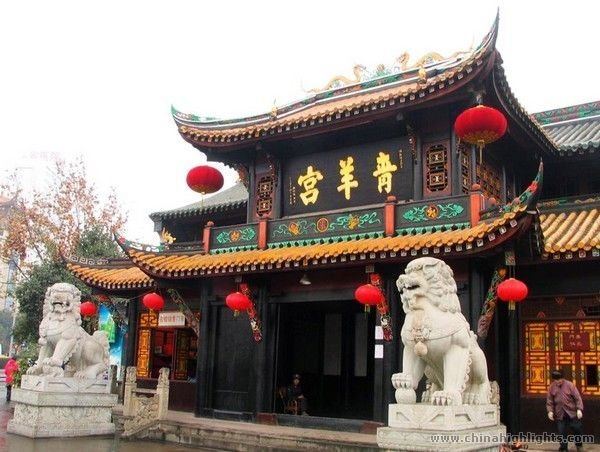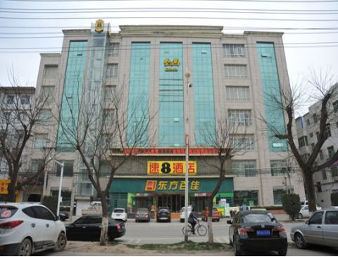Country China Area 27,119 km2 | Province Gansu | |
 | ||
Map of Qingyang
Qingyang (simplified Chinese: 庆阳; traditional Chinese: 慶陽; pinyin: Qìngyáng) is a prefecture-level city in eastern Gansu province, China.
Contents
- Map of Qingyang
- Wenhua park and qingyang temple chengdu
- Eating classic szechuan food on the streetside in chengdu
- Geography and climate
- History
- Meteor shower
- Administration
- Economy
- Transportation
- Culture
- Dining out resort style food lovers delight part 1
- References

Wenhua park and qingyang temple chengdu
Eating classic szechuan food on the streetside in chengdu
Geography and climate

Qingyang is the easternmost prefecture-level division of Gansu and is thus sometimes referred to as "Longdong" (陇东). It forms an administrative peninsula, as it is surrounded, on all sides but the south, by Shaanxi and Ningxia. It is in the lower middle part of the Yellow River on the loess plateau and is within the eastern Gansu basin. Elevation ranges from 885 to 2082 meters above sea-level. There are 5 major rivers in Qingyang including the Malian (马莲河), Pu (蒲河), Hong (洪河), Xilang (四郎河), and Hulu or "Gourd" (葫芦河). Their combined annual flow is more than 800 million cubic meters. Bordering prefecture-level cities are:

Shaanxi:
Gansu:
Ningxia:
Average temperatures for most Qingyang range between 7 and 10 °C. Annual precipitation is 480 to 660 mm and there are between 140~180 frost free days.
The area is 27,119 km2 (10,471 sq mi) with 200 km2 (77 sq mi) of forest and 530 km2 (200 sq mi) of grassland.
History
Qingyang was part of the area where the earliest cultures along the Yellow River developed and was part of the heartland of the Qin state that would eventually unite China. It was also an important place in the communist revolution.
Meteor shower
The Ch'ing-yang event of 1490 (also called the Ch'ing-yang or Chíing-yang meteor shower) is a presumed meteor shower that occurred in the Qingyang district in March or April or 1490 CE. If a meteor shower did occur, it may have been the result of the breakup of an asteroid.
At least three surviving Chinese historical records describe a shower during which "stones fell like rain", killing more than 10,000 people. At least one report of the event is found in the Official History of the Ming Dynasty, and other journal records which describe the event are also generally considered reliable. But the official Ming Dynasty history omits the number of casualties, which has been frequently either doubted or discounted by present-day researchers.
Due to the paucity of detailed information and the lack of surviving meteorites or other physical evidence, researchers have also been unable to definitively state the exact nature of the dramatic event, even examining the possible occurrence of severe hail. However Kevin Yau et al. of NASA's Jet Propulsion Laboratory did note several similarities of the Ch'ing-yang meteor fall to the Tunguska event, which would have destroyed a highly populous district.
One surviving account records:
"Stones fell like rain in the Ch’ing-yang district. The larger ones were 4 to 5 catties (斤, about 1.5 kg), and the smaller ones were 2 to 3 catties (about 1 kg). Numerous stones rained in Ch'ing-yang. Their sizes were all different. The larger ones were like goose's eggs and the smaller ones were like water-chestnuts. More than 10,000 people were struck dead. All of the people in the city fled to other places."
Administration
Qingyang has 1 urban district, 7 counties, and 146 towns with a total population of 2,211,191 (2010), only 310,000 of which are urban residents.
Economy
In 2004 Qingyang's GDP was 8.014 Billion RMB, 11.6% growth over the previous year. Average annual urban income was 5130 RMB, rural was 1428 RMB. Petroleum and natural gas are the backbone of Qingyang's economy. Agricultural products include donkeys, Huan County sheep, cattle, Jin jujubes, milk, apricots and other fruits, vegetables, and berries. 69 different kinds of Chinese medicinal plants and herbs are collected or grown here, 25 of which are exported.
Transportation
Culture
Qingyang is famous for its rich folk culture. Traditional Chinese art forms such as shadow puppet theater, paper cuts, folk music, and songs are still part of Qingyang's culture.
